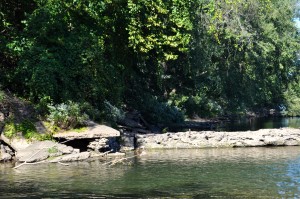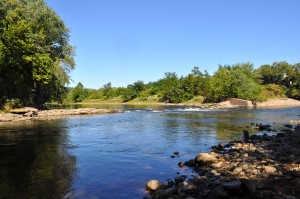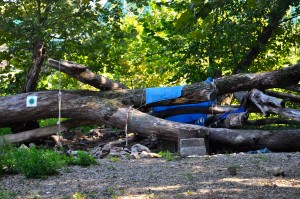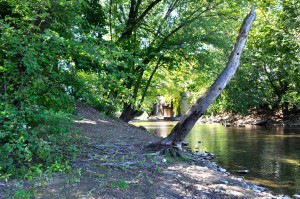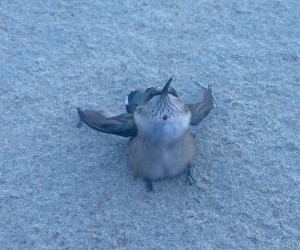1. Confluence– Ice cutting operation, log drives on Delaware, Getter’s Island
The Confluence is a hidden gem of Easton’s edge. Where the Bushkill meets the Delaware, there is piece of crumbling infrastructure that now acts as a partial dam. To the south, there is a homeless person’s paradise. It is complete with a practice target, a rope swing and a fire pit. The home is made up of blue construction tarps along with fallen trees that offers a great deal of protection from the elements. The ground is rocky until it meets the water edge. The water is calm off the Bushkill tributary; it appears to be no deeper than a foot.
Getter’s Island is in the middle of the Delaware River. It would be impossible for us to get there without swimming across. The island shores are rocky, and it is covered in various varieties of trees and shrubs. We see no wildlife, but you can hear the birds in the trees.
As we walk North towards 611, the cars pass us, speeding to their destination. The riverside of the highway is covered in litter. We pass another homeless person’s campground, carful not to disturb them. We come to the end of Getter’s Island, the entire landmass can be no more than half a mile long and 200 feet across at its widest point.
Observing Getter’s Island would have been much different if we were able to physically get on the Island and experience it. We would have been able to be up close to the nature, but instead we observe from a distance.

